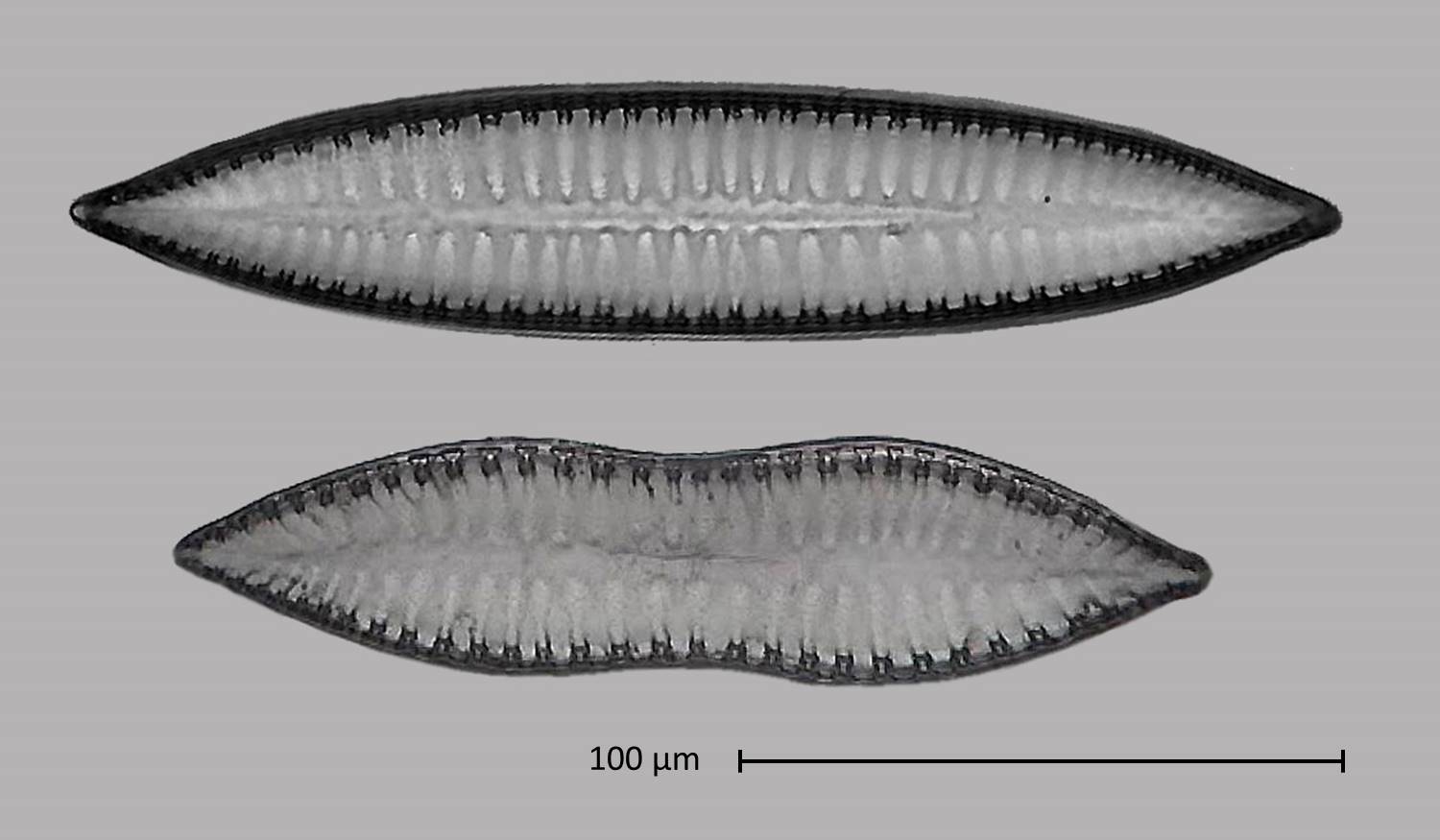The diatoms of the species Surirella biseriata (Brébisson) were convex in valve view at the beginning of cultivation. The following video (450x time lapse) was made about 6 months after starting cultivation. It can be seen that the outline of the valves is often concave, as there are more or less pronounced waists. There seems to be a smooth transition from the shape of normal cells to malformed cells. Symmetry with respect to the apical plane is not always maintained.
The following picture shows an early generation valve with a length of 211 µm. Underneath it is a malformed diatom with a length of 176 µm. All diatoms with concave contours are about this size. The malformation seems to be restricted to the outline.

Cultures with diatoms showing such deformities do not thrive well. In the case of vegetative reproduction of diatoms with malformation, malformations also occur in daughter cells.
I exclude contamination as a cause. It could be a deficiency symptom due to an unsuitable nutrient solution or a consequence of reaching or undercutting the length required for sexual reproduction. As the malformation occurred in two different nutrient solutions to the same extent and only the small diatoms and their daughter cells are affected, I tend to believe that the small size is the cause.
It should be noted that these observations are not entirely in line with Hofmann et al. (2011). There the concave forms are assigned to the larger forms. A transition between these forms in the course of a succession of generations is not mentioned. Also the frequently observed asymmetries (different radii of curvature of the concave sides) are not taken into account. (The length range is given by Hofmann et al. (2011) as 80-400 µm.)
DEBENEST T., SILVESTRE J., COSTE M., DELMAS F. & PINELLI E. 2008. Herbicide effects on freshwater benthic diatoms: induction of nucleus alterations and silica cell wall abnormalities. Aquatic Toxicology 88: 88-94.
Falasco Elisa, Bona Francesca, Ginepro Marco, Hlúbiková Daša, Hoffmann Lucien, Ector Luc. Morphological abnormalities of diatom silica walls in relation to heavy metal contamination and artificial growth conditions. Water SA [Internet]. 2009 Oct.
Falasco, E., Bona, F., Badino, G. et al. (2009). Diatom teratological forms and environmental alterations: a review, Hydrobiologia, 623, pp 1-35.
Hofmann, G & Werum, Marcus & Lange-Bertalot, H. Diatomeen im Süsswasser-Benthos von Mitteleuropa. Lange-Bertalot, H. (ed.), Gantner Verlag, Ruggell, Liechtenstein, (2011)
LOCKER F (1950) Beiträge zur Kenntnis des Formwechsels der Diatomeen an Hand von Kulturversuchen. Österr. Bot. Z. 97 (3-5), 322-332